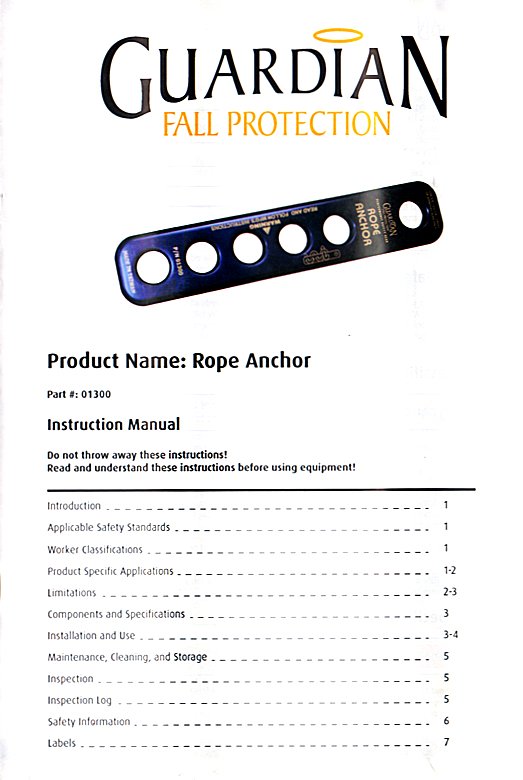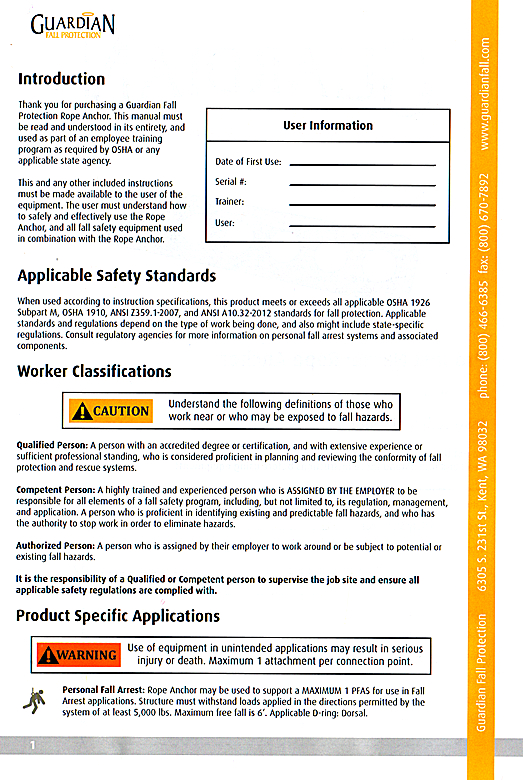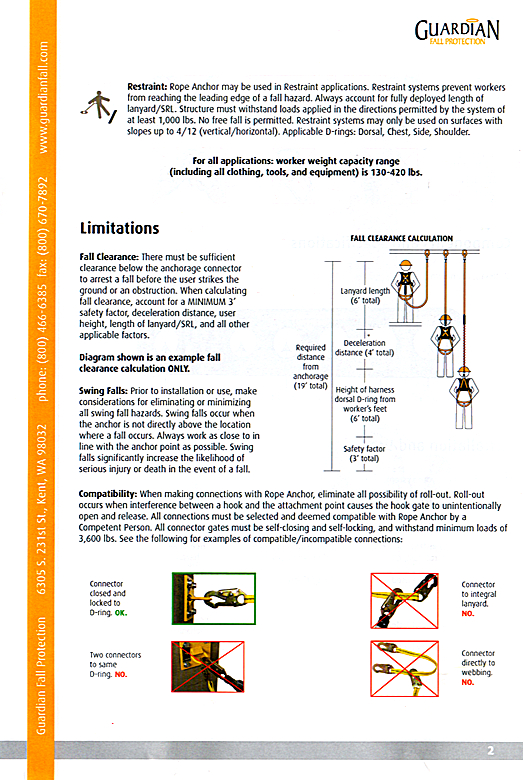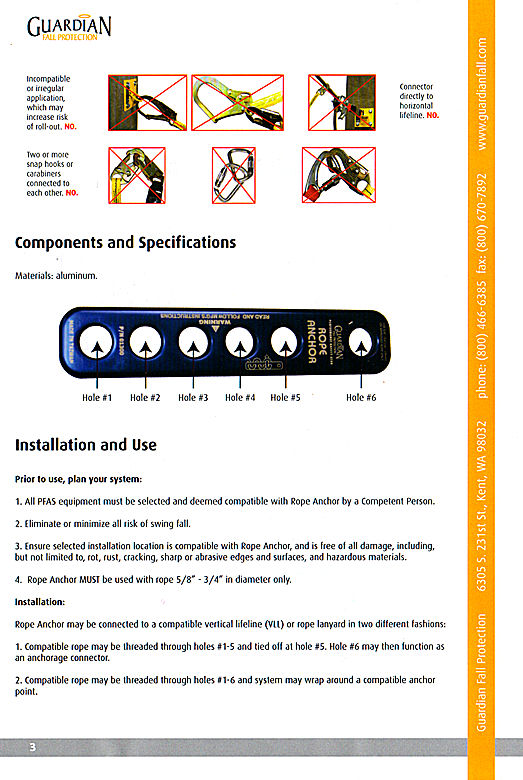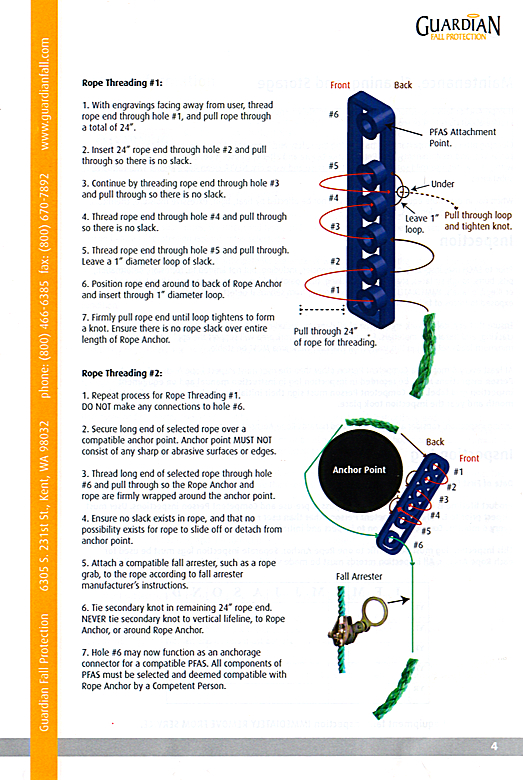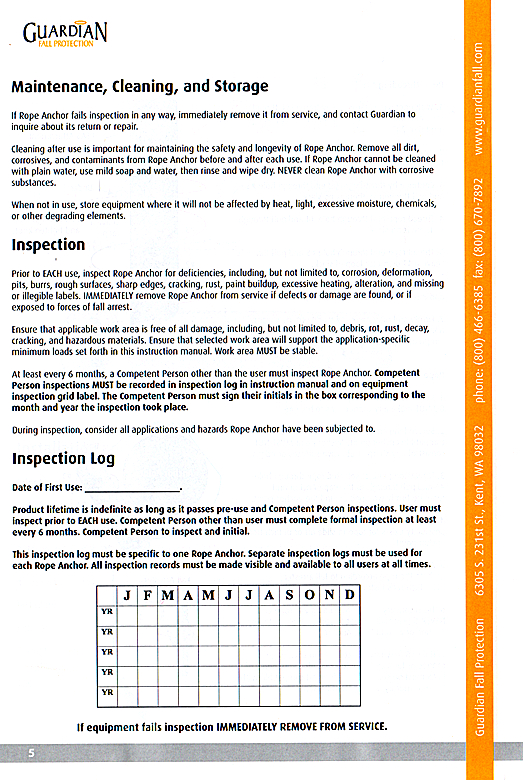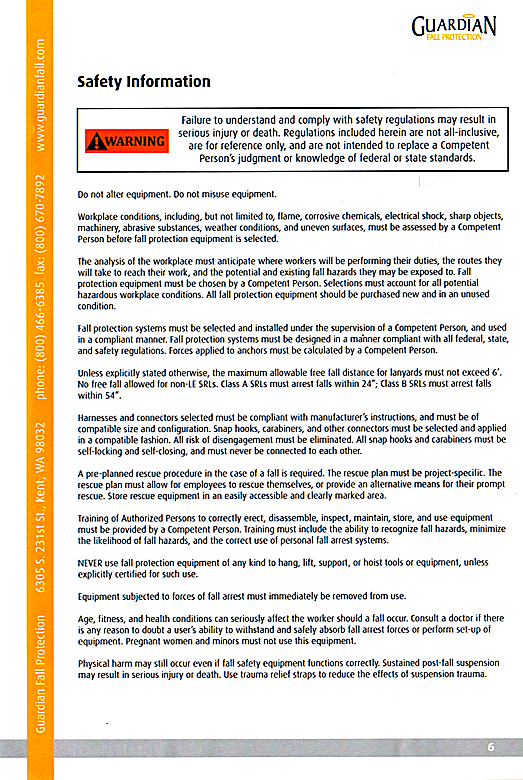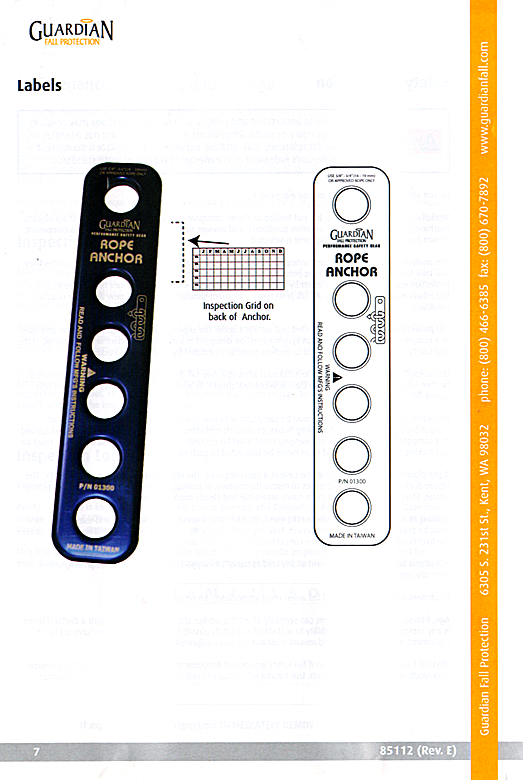Technical Details
I acquired my Guardian Fall Protection #01300 from Onyx Enterprises Int’l Corp in 2021.
My Guardian Fall Protection #01300 is 254 mm. long, 51 mm. wide, 10 mm. thick, and weighs 267 g. The Termination anchor is milled from an aluminum alloy plate and then soft anodized. It has six 22.5 mm. holes designed for use with 5/8"-3/4" (16-19 mm.) rope.
The front is printed with "USE 5/8-3/4" (16-19 mm) OR APPROVED ROPE ONLY," "GUARDIAN FALL PROTECTION," "PERFORMANCE SAFETY GEAR," "ROPE ANCHOR," a rigging illustration, a caution icon, "WARNONG," "READ AND FOLLOW MFG’S INSTRUCTIONS," "P/N 01300," and "MADE IN TAIWAN." The reverse side has a sticker with a five-year grid for logging monthly inspections.
The Guardian Fall Protection #01300 is one of the following nearly identical termination anchors:

 My first impression was that these were designed for members of the bigger-is-better crowd and for people who don't know how (or can't be trusted) to tie knots but can memorize an eight-page instruction manual. Even so, users should be particularly careful to follow the rigging illustrations exactly, even when it not provided. The typical illustration, if one exists, has an Escheresque feel that makes it easy to overlook some of the subtleties required for proper use. By the way, the rigging illustrations, when they exist, do not always completely agree with each other.
My first impression was that these were designed for members of the bigger-is-better crowd and for people who don't know how (or can't be trusted) to tie knots but can memorize an eight-page instruction manual. Even so, users should be particularly careful to follow the rigging illustrations exactly, even when it not provided. The typical illustration, if one exists, has an Escheresque feel that makes it easy to overlook some of the subtleties required for proper use. By the way, the rigging illustrations, when they exist, do not always completely agree with each other.
These can be used to create an anchor that can be released under load, but that can be done without requiring special equipment. These might prove useful in some specialized situations (perhaps in training rigging?), but I don't see much need for these in general caving or climbing.
The illustrations on page 5 of the manual look like someone attacked the anchor with a milling machine. Apparently someone in Tech Pubs printed the illustration with a block turned off in their solid modeling program.

For far more content, use a larger monitor and a full-width window.
Hundreds of cell phone users complained and asked me to for a simpler, mobile friendly site. In particular, they wanted me to limit each page to a small number of pictures and minimize my use of text. This new site provides what they asked for.




